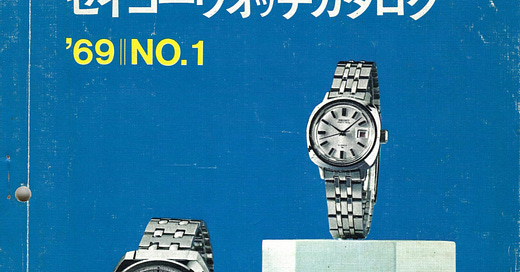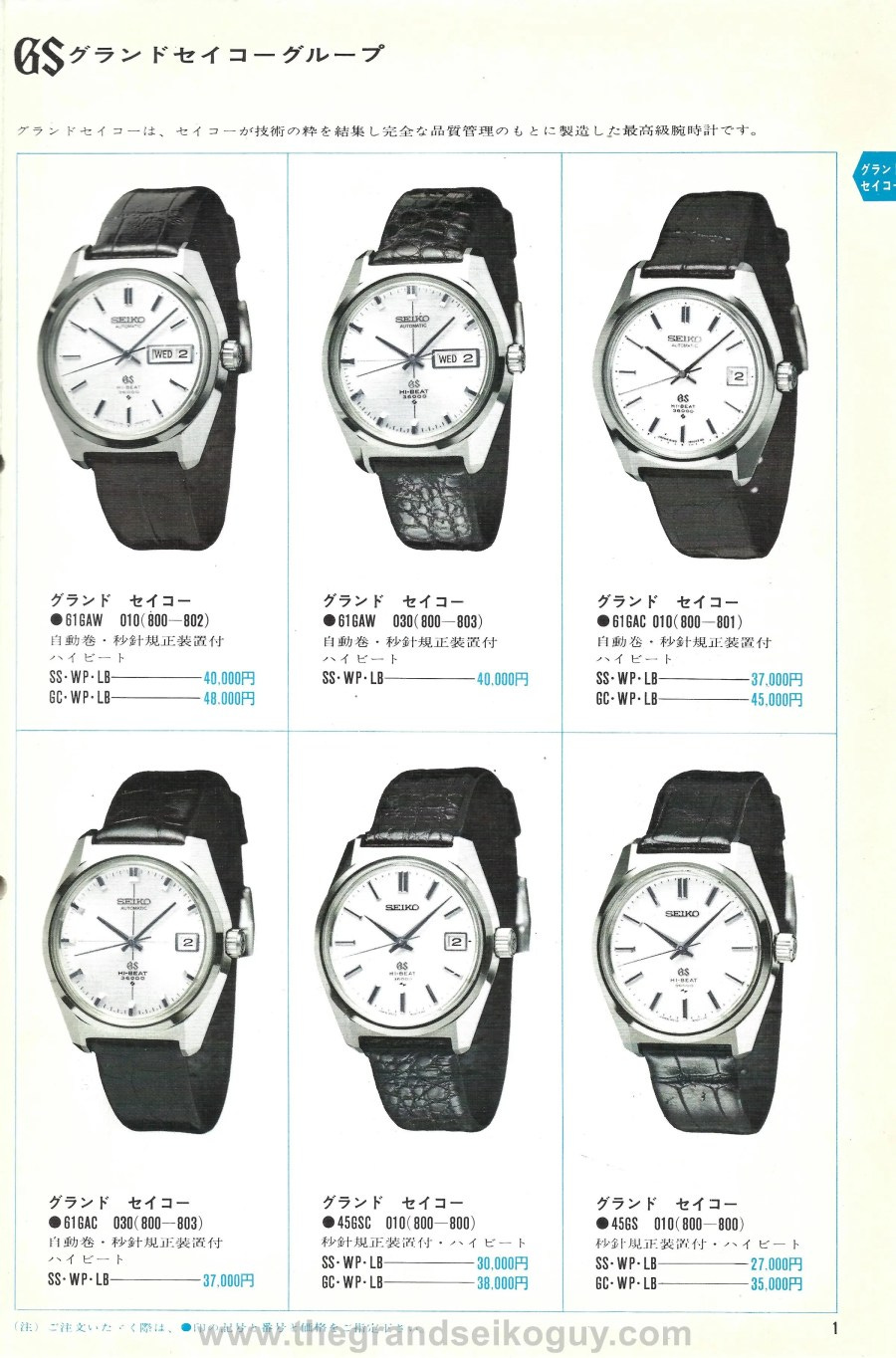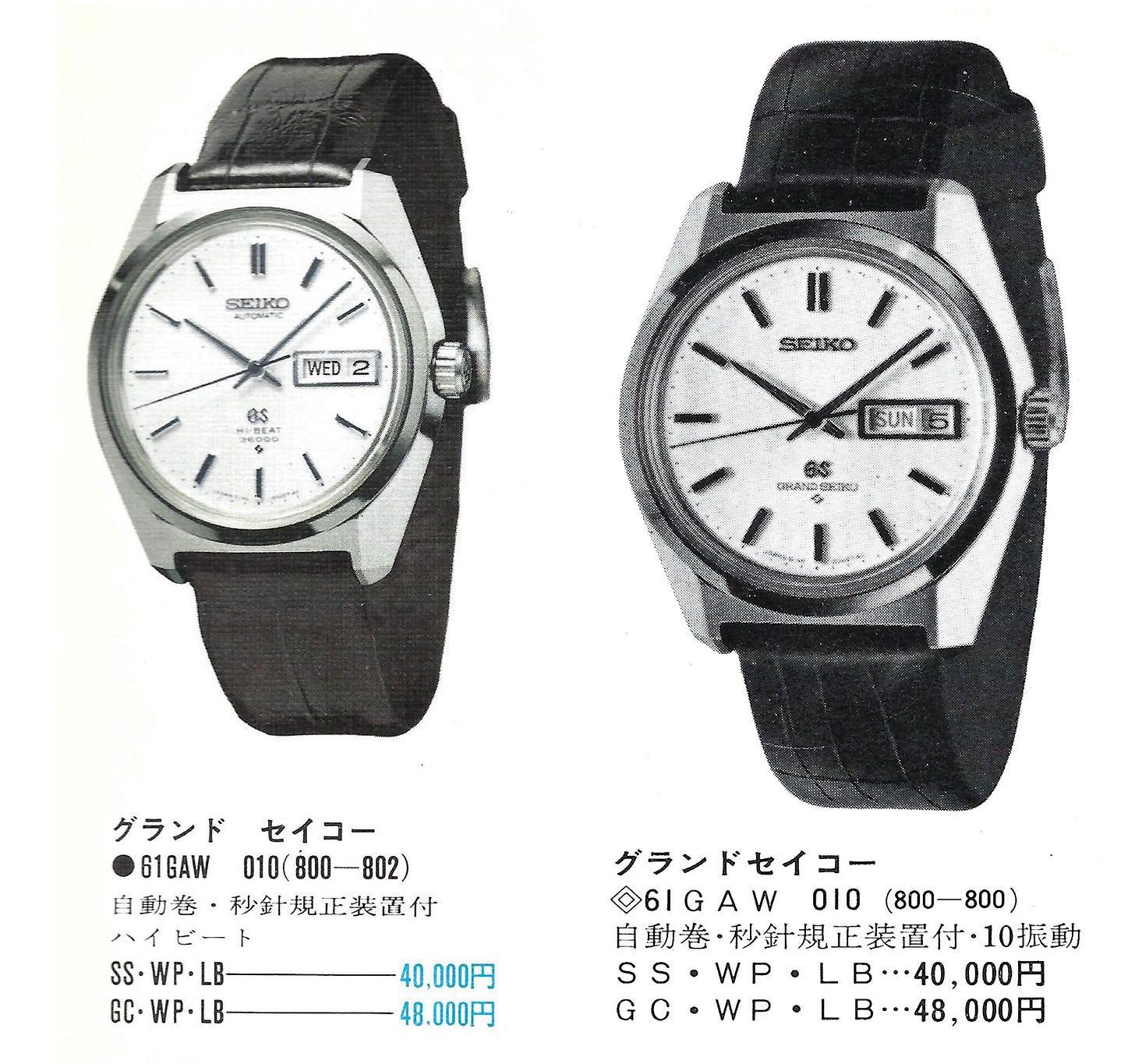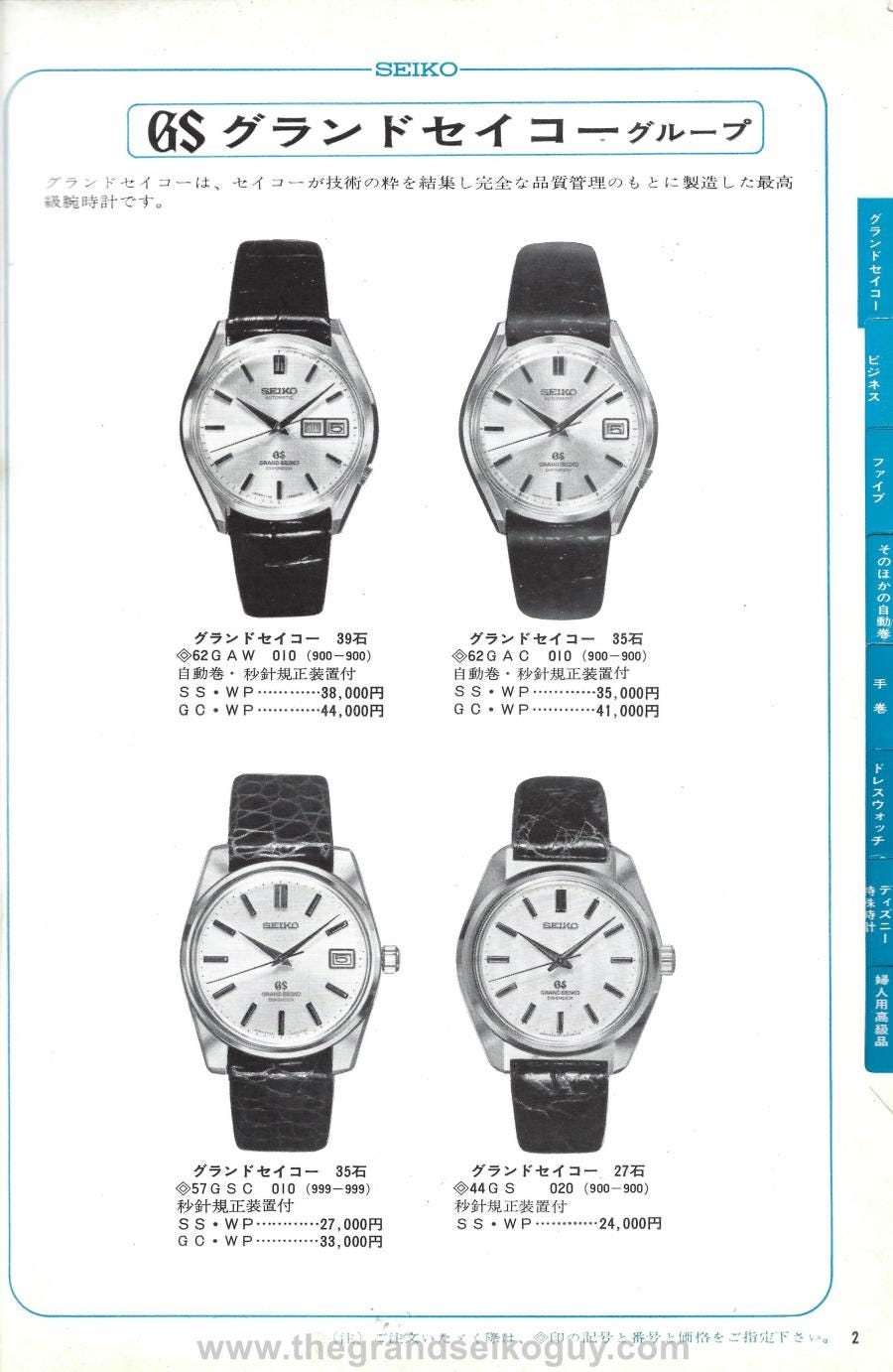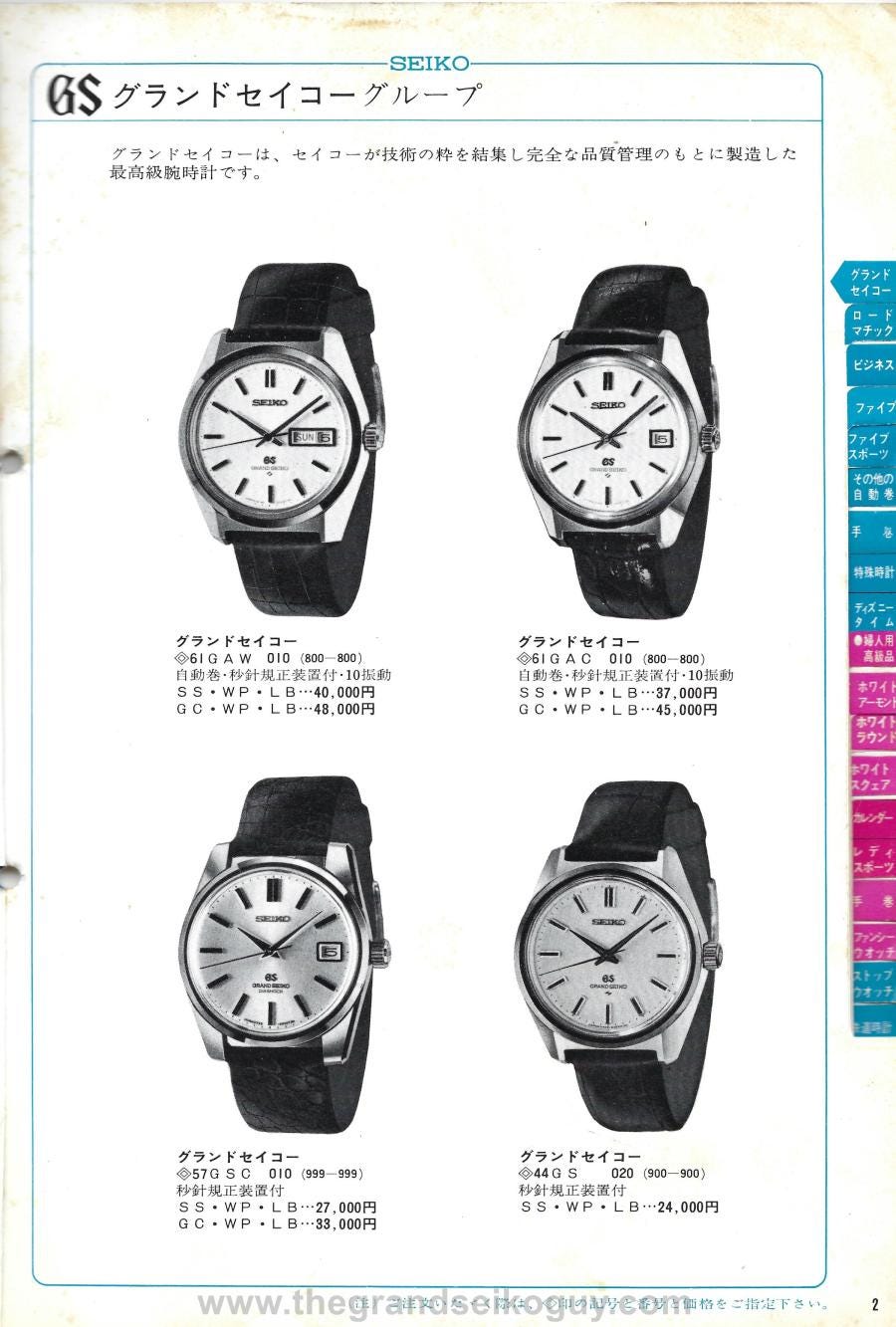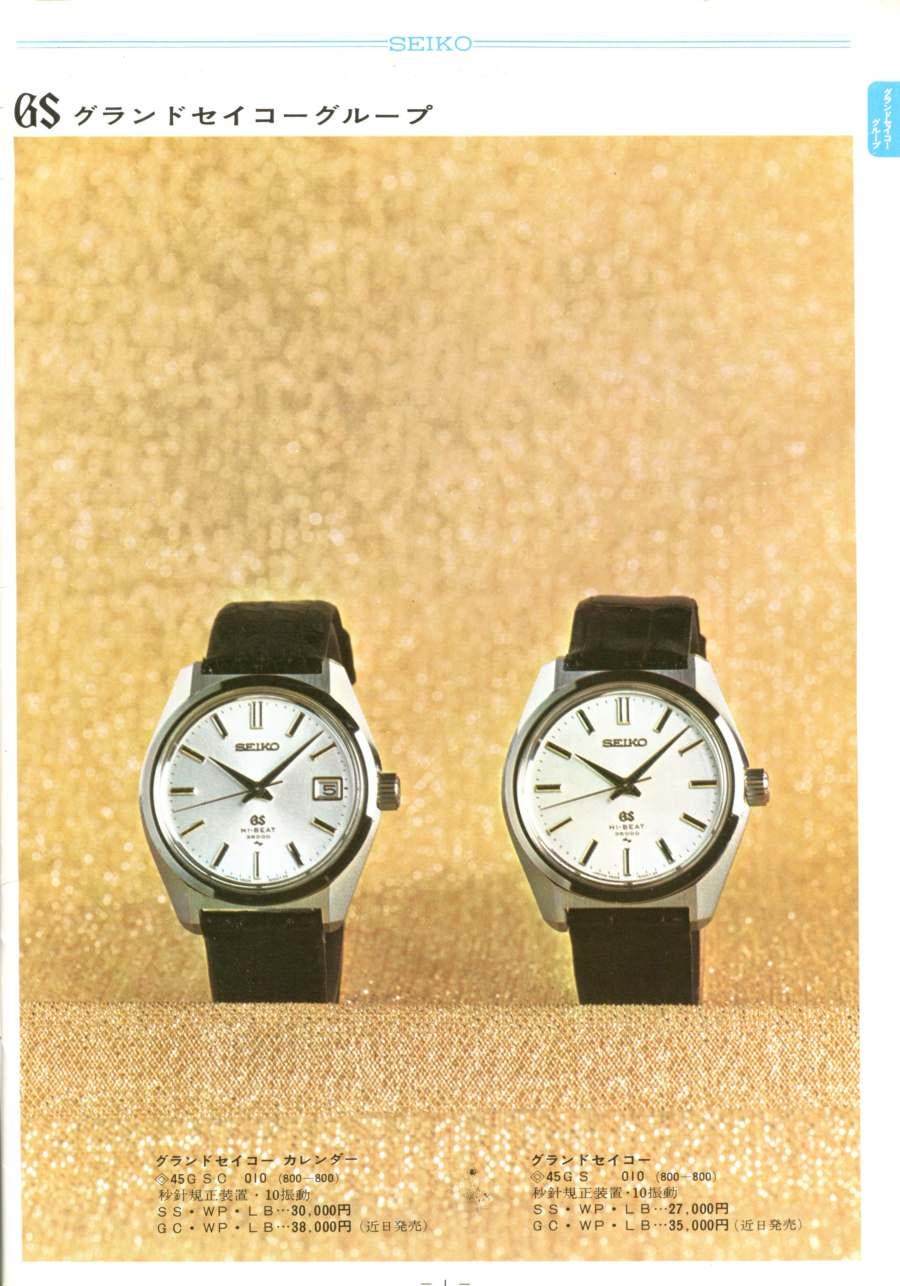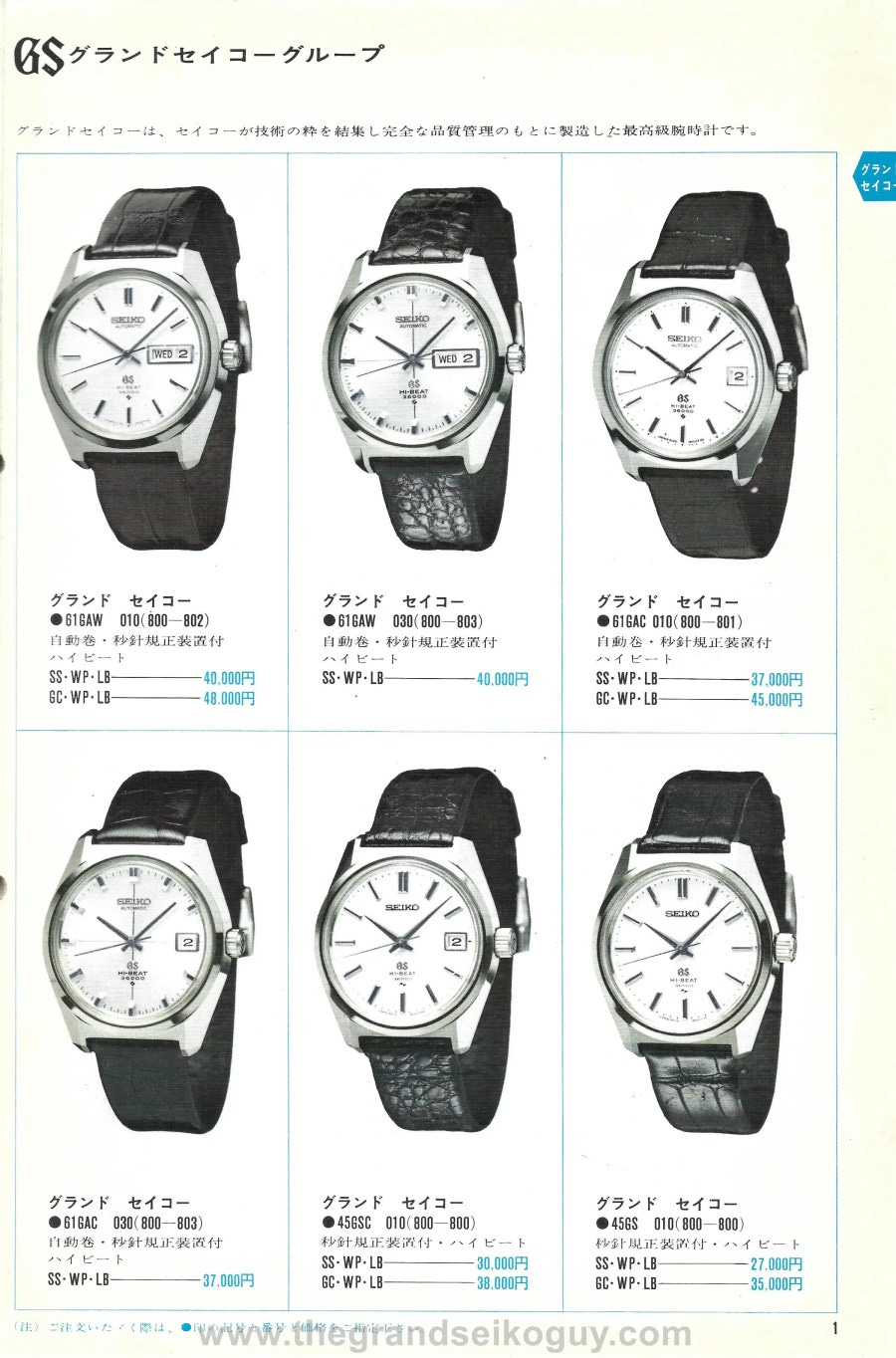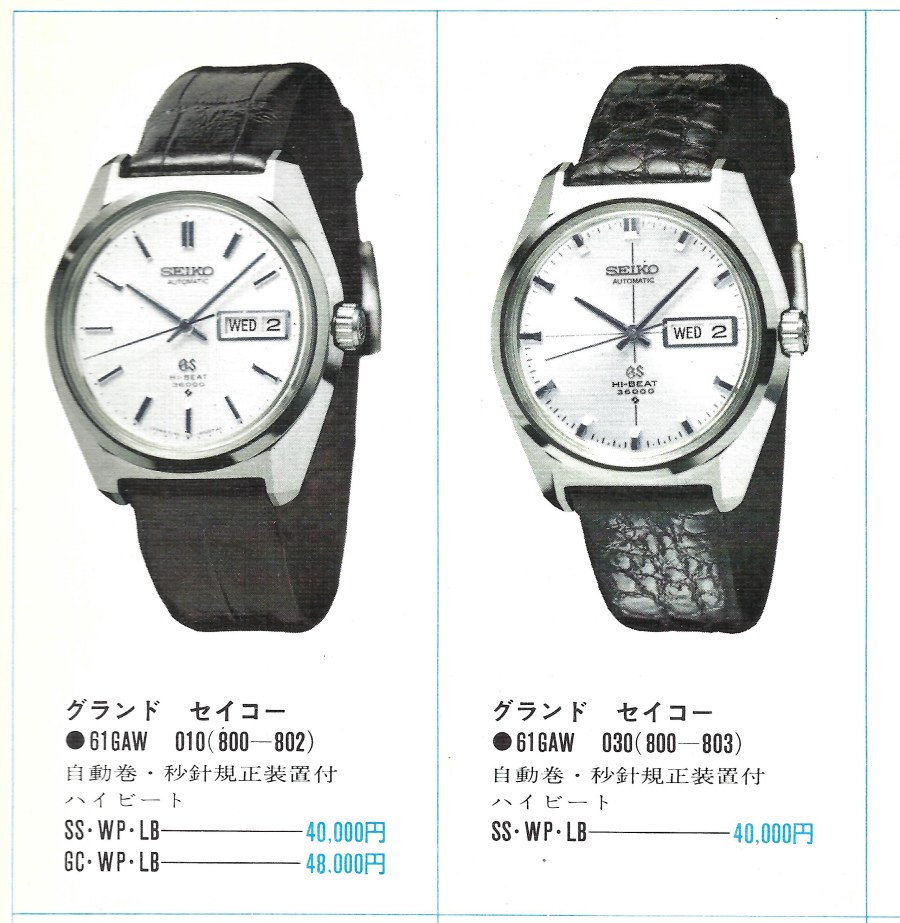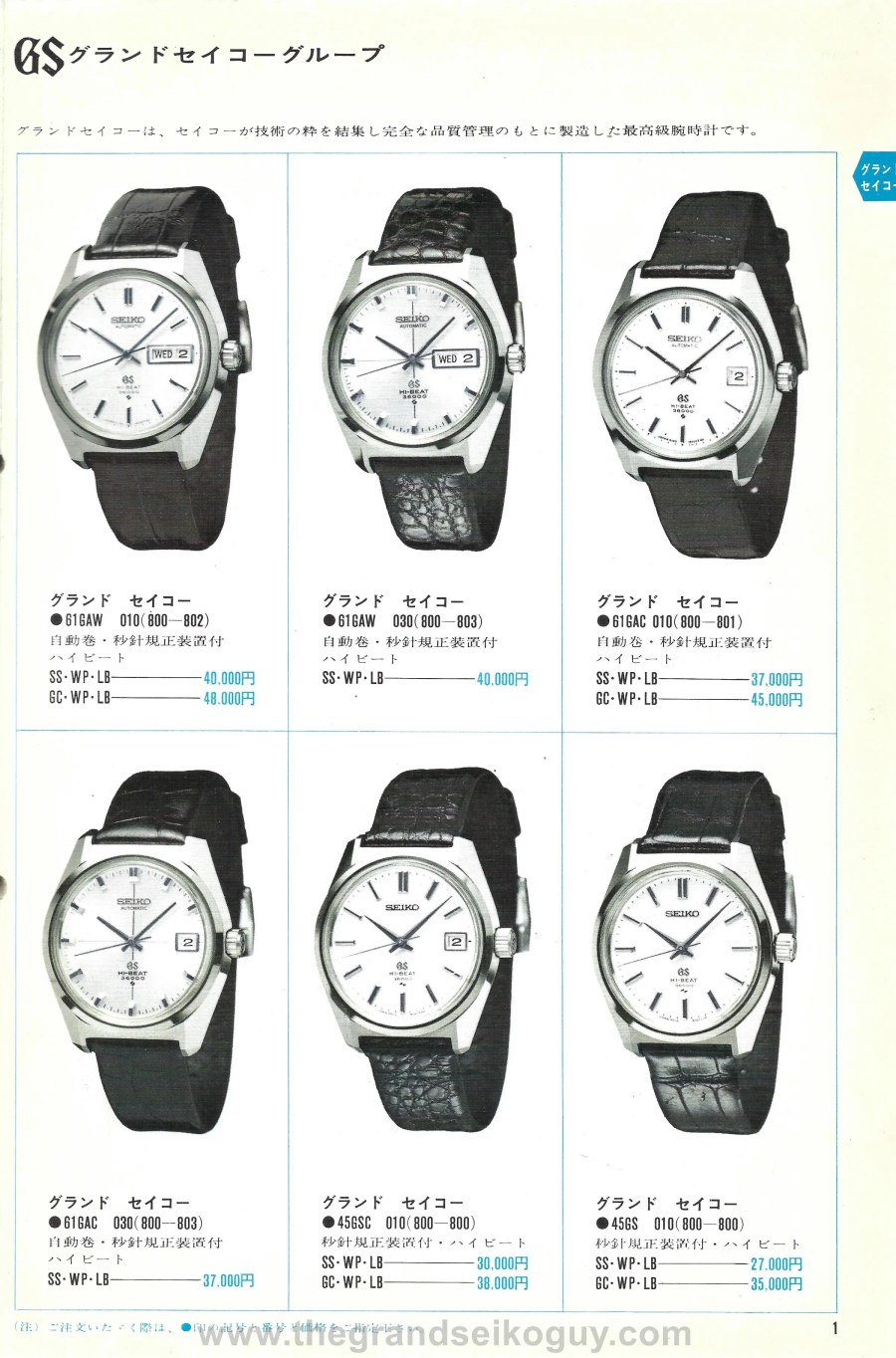Preamble
For the benefit of those subscribers who have signed up recently, each Tuesday I publish an article featuring scans of vintage Grand Seikos that appeared in the Seiko catalogues of the 1960’s and 1970’s.
Although based on the articles originally published on TGSG website, these articles will be updated where appropriate with additional knowledge gained in the three or so years since they were first made available.
Additionally, since I now have the complete set of the catalogues, I am able to publish these articles in the correct chronological order - something that wasn’t possible when posting to the main website since, when starting out documenting the catalogues, I hadn’t completed my collection of them.
You can view the previously published newsletters in this series here.
The Seiko 1969 no.1 catalogue
You wouldn’t know it from leafing through this catalogue, but 1969 would turn out to be one of the most significant years, not just in the relatively short history of vintage Grand Seiko, but in the history of watchmaking.
No doubt many reading this newsletter will be aware of what is to come later in the year, but it is worth noting that in this catalogue there is - once again - just a single page featuring Grand Seiko, and the most expensive watch in the range is priced at 48,000 Yen.
Pictured above is the single page from this catalogue that features Grand Seikos. Although just six watches are pictured, due to the same image being used for both stainless steel and cap gold cased variants, a total of 10 distinct references are detailed.
Those who have been following this series of newsletters on the catalogues may recall that the 1968 volume 2 catalogue introduced the 61GS series, and the supplement to that catalogue introduced the 45GS series.
Significantly, references from both the 44GS and 57GS series that were featured in volume 2 of the 1968 catalogue are no longer presented, leaving just the 45GS and 61GS models available.
The importance of this completed transition to the new series, as presented in this catalogue, cannot be understated. Without the catalogue as a contemporaneous reference point, it perhaps wouldn’t be quite so obvious as to how much the Grand Seiko offer changed in just 6 short months.
Every single model in the range now had a 36,000 bph movement.
Whilst not in the purview of this series of articles to go into any detail regarding the Swiss chronometry trials that both Daini Seikosha (responsible for the 45GS series) and Suwa Seikosha (responsible for the 61GS series) competed with such success in the 1960’s – for that we would refer the reader to Anthony Kable’s superb feature on the subject – it can clearly be seen that the lessons learned from competing in the trials over the previous few years had a significant impact on the ranges developed for offer to the general public.
For both Daini and Suwa, the references featured in this catalogue would, by the end of the year, lead to the absolute pinnacle of Grand Seiko timepieces. From the perspective of the vintage Grand Seiko collector, volume 1 of the Seiko 1969 catalogue marks the beginning of a golden era.
Changes to the 61GS base references
On the left of the above image is the 6146-8000 base reference (I will explain later why I’m referring to this as the “base” reference) as presented in this catalogue. On the right, is the same reference, but as it appears in the 1968 volume 2 catalogue.
As is immediately obvious, the text layout on the dial has changed. Gone is the full name of the brand, and in its place, the text “Hi-beat” and “36000” added – clearly Seiko wanted to better highlight this significant new feature. Additionally, the word “Automatic” is added under the GS logo at the top of the dial. This makes sense of course, because it provides a clear distinction between the functionalities of the 45GS and 61GS series.
With the benefit of hindsight and the availability of the catalogues, we can now follow the evolution of the information displayed on the dial from the 57GS series, through the 44GS series, and into the 61GS and 45GS series, and it’s probably worth taking a moment to walk through that evolution.
Seiko catalogue 1968 volume 1
In the scan above from the 1968 volume 1 catalogue, references from all three series (62GS, 57GS, 44GS) have the same dial layout – in the bottom half of the dial, we find the GS logo, and the text “Grand Seiko”, “Diashock”. The top half of the dial has the Seiko logo, and, where appropriate, the text “Automatic” immediately underneath.
Seiko catalogue 1968 volume 2
When we get to the second half of 1968, represented by the second volume of the 1968 catalogue, we have a redesign of the 44GS dial, with the replacement of the word “Diashock” with the logo for Daini-Seikosha. This matches the design of the 61GS series that debuted in this catalogue.
Seiko catalogue 1968 volume 2 supplement
The supplement to volume 2 of the 1968 catalogue introduces the 45GS series, and here we see the brand new layout, with the previous “Grand Seiko” replaced by two lines of text highlighting the hi-beat nature of the movement, and the fact it beat at 36,000 bph.
Seiko catalogue 1969 volume 1
And finally, repeated from earlier in the post for continuity’s sake, in volume 1 of the 1969 catalogue, we see a redesign of the 61GS references first presented in volume 2 of the 1968 catalogue – they now match the design layout of the newly introduced 45GS references.
In summary, the evolution of the design of the bottom half of the dial was as follows –
Starting with the GS logo, and the text “Grand Seiko” and “Diashock”,
Drop the word “Diashock” and replace it with the logo of the factory producing the reference
Drop the text “Grand Seiko” and replace it with the text “Hi-Beat” and “36000”
This evolution, when combined with the introduction of new series, makes for a very interesting collecting experience as both the 44GS references and the 6145/6-8000 base references are available with two different dial designs. And it happened over just a 12 month period.
The 6145/6-8000 references
Previously I mentioned referring to the 6145/6-8000 as having a “base” reference. The reason for this is that there are number of different models with the same movement-case reference number – in fact, there are no fewer than 8 of each 6145- prefixed day, and 6146- prefixed day-date, references that use the -8000 case suffix.
The first explanation for the proliferation of models with the same reference number is that there was – unlike with the 57GS and 44GS series, but similar to the 62GS series – no distinction made for the case material. Stainless steel and cap gold cased (and the later introduced 18K gold cased) variants all had the same -8000 case code.
Secondly, the short-lived initial 6145/6-8000 references with “Grand Seiko” on the dial also had the same case reference.
Thirdly, as can be seen in the above image taken from the catalogue, we actually have two different dial designs for the 6146-8000 (these designs also exist on the 6145-8000) – one the “base” dial, and one with a hairline cross design. Note that the “cross dial” variant was only ever available in the standard stainless steel case.
Finally, as we will see in later catalogues, the base reference was also made available on a bracelet.
Pricing
With regards to price architecture, we can see a very clear logical structure.
The “bottom” level model in the range – the 4520-8000 – is priced at 27,000 Yen. The incremental cost on this base price for different features is consistent across all references from both series offered in the range –
Add a date complication – 3,000 Yen
Add a day-date complication – 6,000 Yen
Add automatic movement – 7,000 Yen
Add cap gold case – 8,000 yen
Gallery
Presented below is a scan of the single page from the 1969 Number 1 catalogue that features Grand Seiko references.

